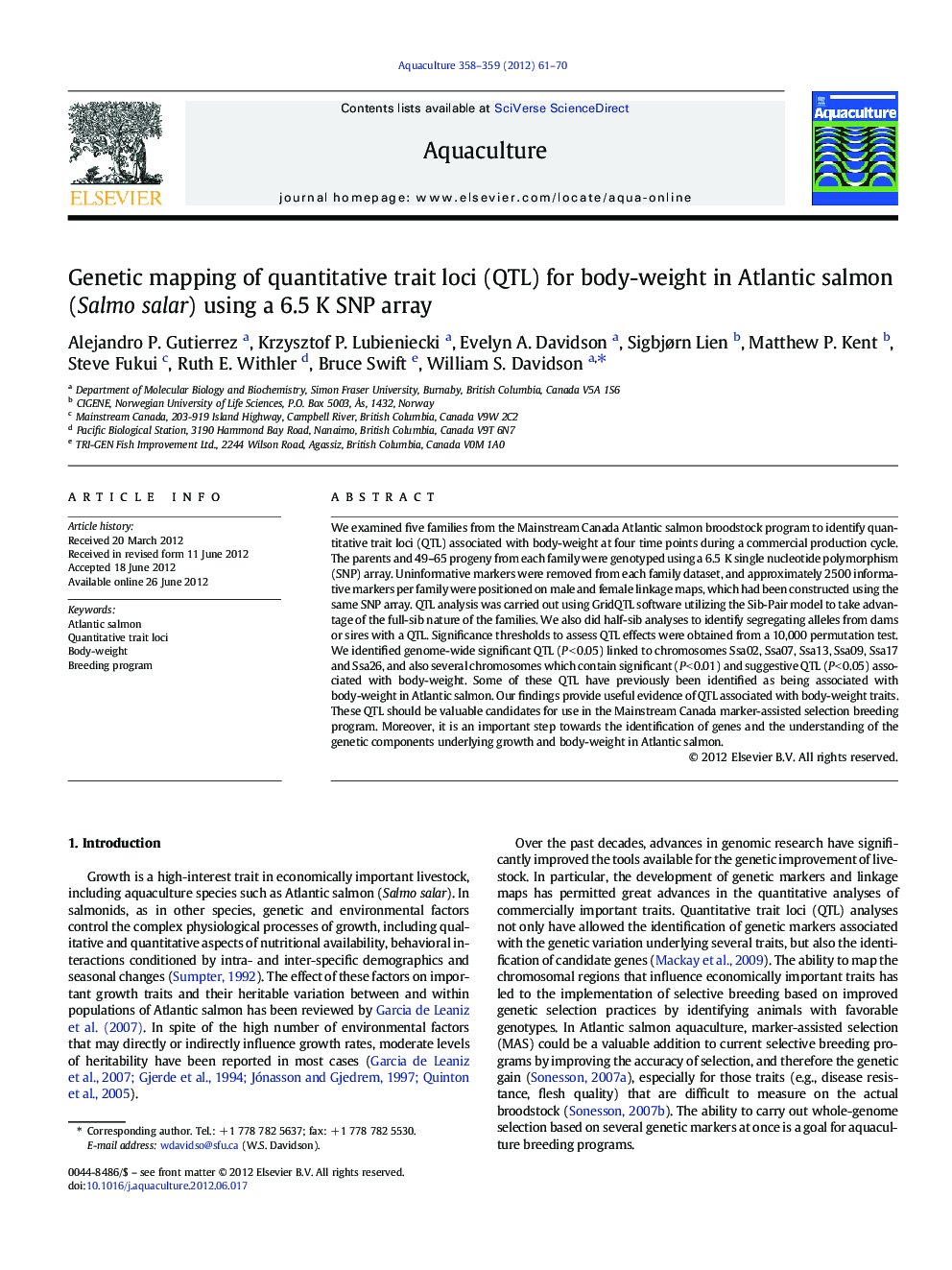| Article ID | Journal | Published Year | Pages | File Type |
|---|---|---|---|---|
| 2422484 | Aquaculture | 2012 | 10 Pages |
We examined five families from the Mainstream Canada Atlantic salmon broodstock program to identify quantitative trait loci (QTL) associated with body-weight at four time points during a commercial production cycle. The parents and 49–65 progeny from each family were genotyped using a 6.5 K single nucleotide polymorphism (SNP) array. Uninformative markers were removed from each family dataset, and approximately 2500 informative markers per family were positioned on male and female linkage maps, which had been constructed using the same SNP array. QTL analysis was carried out using GridQTL software utilizing the Sib-Pair model to take advantage of the full-sib nature of the families. We also did half-sib analyses to identify segregating alleles from dams or sires with a QTL. Significance thresholds to assess QTL effects were obtained from a 10,000 permutation test. We identified genome-wide significant QTL (P < 0.05) linked to chromosomes Ssa02, Ssa07, Ssa13, Ssa09, Ssa17 and Ssa26, and also several chromosomes which contain significant (P < 0.01) and suggestive QTL (P < 0.05) associated with body-weight. Some of these QTL have previously been identified as being associated with body-weight in Atlantic salmon. Our findings provide useful evidence of QTL associated with body-weight traits. These QTL should be valuable candidates for use in the Mainstream Canada marker-assisted selection breeding program. Moreover, it is an important step towards the identification of genes and the understanding of the genetic components underlying growth and body-weight in Atlantic salmon.
► We used a 6500 SNP array to genotype 5 Atlantic salmon families. ► We used the genotype information to identify QTL for body weight. ► Genome wide significant QTL occur on Ssa02, Ssa07, Ssa13, Ssa09, Ssa17 and Ssa26. ► These QTL will be valuable for use in a marker assisted selection breeding program. ► This is an important step towards identifying genes for growth in Atlantic salmon.
